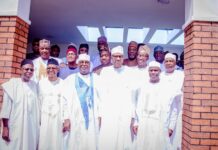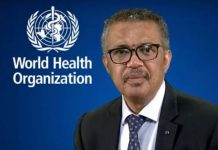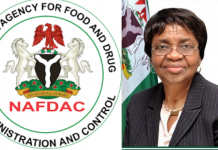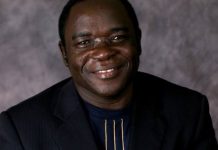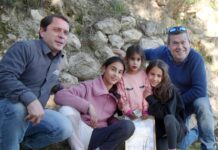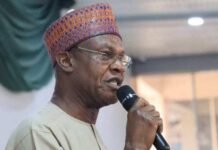The National Economic Council (NEC) chaired by the vice president, Prof. Yemi Osinbajo has approved a 10-year National Livestock Plan which will cost about N179 billion to build 94 cattle ranches in Adamawa, Benue, Ebonyi, Edo, Kaduna, Nasarawa, Oyo, Plateau, Taraba and Zamfara states under the National Livestock Implementation Plan.
The National Livestock Implementation Plan is a mediation plan stemming from meetings and recommendations of the Federal Ministry of Agriculture and Rural Development (FMARD) and the National Economic Council (NEC) in 2017 regarding state interventions following the incessant pastoralist-farmer conflicts.
About N70 billion of the budget will be disbursed between now and the expiration of President Muhammadu Buhari’s first four-year tenure next year.
The project is expected to take off in Benue and Nasarawa states that are prone to bloodbath occasioned by deadly attacks by armed herdsmen.
These disclosures were made yesterday in Abuja by the secretary of the NEC sub-committee, Dr. Andrew Kwasari, at the unveiling of the NEC’s National Livestock Transformation Plan as part of efforts to end clashes between farmers and herdsmen.
Kwasari disclosed that in April NEC approved the pilot implementation of the Federal Government-States Joint Ranching Policy as recommended by the sub-committee.
“A ranch design has also been proposed in models of various sizes clustered in 94 locations in the 10 pilot states,” he said
Kwasari added that the government planned transformation of pastoralism to ranching “to reduce the struggle for common resources.”
In the plan, Kwasari said governors and private entities of the frontline states had donated land for the establishment of pilot ranches.
Kwasari indicated that there would be ranch models of 30, 60, 150 and 300 cows in a location within grazing reserves.
“Based on the carrying capacity of each of the model ranches above, as determined by pasture and fodder yields land is allocated for pasture production,” he said.
He explained that grain production for livestock feed and post-harvest residues were incorporated into the ranching design.
He further said the transition from pastoralism to ranching would, among other benefits, improve genetic material of indigenous cattle for milk and meat production.
Kwasari said it would also provide “critical market access” and better linkages between smallholder livestock producers and investors in agriculture technology.
He stated that government would engage the private sector and other countries “to work with Nigerian research institutes in developing national cattle breeds for dairy and beef production over a 10-year period.
“The plan envisages cross-breeding scheme with exotic semen of Brahman on Sokoto/Adamawa Guadli for beef cattle, while Holstein Friesian/Jersey will be used to cross breed Bunaji,” he added.
Explaining access to finance and market, Kwasari, said, among other methods, the anchor –borrower approach used for crop farmers would be adopted in the ranching model.
He said the ministry of agriculture had submitted a memo on the legal framework of the ranching plan to the federal government.
According to the legal framework, pastoralists will be registered and recognised as cooperatives for the purpose of the ranching scheme.
“Cooperatives will benefit from the ranch resources on several terms including loans, grants and subsidies.
“Expected milk output will be in excess of 200 million litres by the second year of the project (but by the first year of productivity). Our national milk deficit is about 700 million liters per year. Expected milk output is 700 million litres by the fourth year of the project,” he said.
He explained that the pilot scheme would be financed by government, but a massive private sector investment of N100 billion is envisaged between the third and 10th year.
Kwasari added that seven breeder ranches in seven of the 10 pilot states would be established, adding that 94 ranches would be set up in 24 locations.
“One semen bank will be set up in each of the pilot states. Private artificial insemination and health facilities will also be established in each ranch zone,” he added.
In his remarks, the minister of agriculture and rural development, Mr. Audu Ogbe said there was no going back on the creation of ranches, dismissing the insinuation that the government planned to seize land from owners or communities.
He said the conflicts between herdsmen and farmers were not about anti-open grazing laws.
“So the conflict didn’t begin because the laws were passed. No, the conflict has been brewing but the laws were enacted in desperation by a state. Farmers went to the governor and complained, ‘they are killing us’, so the governor says, ‘let me pass a law’. If we did what we are doing now 20 years ago, we will not be where we are now.
“The truth is that open grazing is no longer viable. We may not end it in one day, but it has to end and government has to help. This conflict is not peculiar to Nigeria alone; it’s happening in Argentina; it happened in the US, in the 19th century, in Pakistan and others. So, this is what we should have started doing 20 years ago. We didn’t and that’s why we are where we are.
“Lastly, the government has no intention of seizing anybody’s land. So, the idea that somebody is going to forcefully take the land is not true. In Fashola’s farm, there are Fulani residents there who speak Yoruba fluently.
“One of them said, ‘we have found peace here’. They produce fresh milk for Friesland Capina. If you see the turnover of Friesland Capina during their annual turnover, you will be amazed. These are the issues.
“The ECOWAS Treaty says free movement of human, animals and goods. We had a meeting with the ECOWAS ministers here. We are going to have another. We will tell them, ‘you must do what Nigerians want’. Roaming around is no longer an answer. We may have to shut our borders. How large is the Nigerian border space? 4037 square kilometres is the landmass from Sokoto to Badagry and from Borno to Calabar. Added up, it’s plus 830 kilometres of coastline. Half of our borders are open. Should we build a wall? People wander in and out. So it is a very complex thing.
“When we implement this thing, how do we prevent cows from West Africa marching in when they like with no respect for our tradition and cultures? These are the problems we face.
In these ranches, we can then say nomadic education can work, the Fulani are in clusters. By 5am, they milk their cows and sell to the milk processing plants which will be installed there. They begin to realise that it pays to stay.
“There is an experiment we did in Kano. The firm tried to settle a number of herdsmen in a location and they gave scholarship to their children. If your male child is in school, they buy your milk for N120 per litre but if your girl child is in school, they buy it for N140 per litre and believe me, every morning Fulani send their children to school while they milk their cows. They have to be in one place. So a lot of incentives will come and we will use the cow dung to generate electricity,” he said.
Withe Punch and The Nation reports





